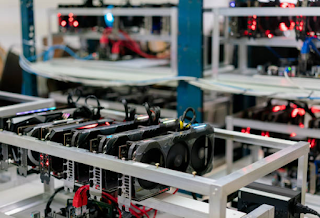Predicting the future: Will Bitcoin price hit $100,000 in 2024?
Bitcoin has taken over the world by storm since its inception in 2009. It is a decentralized digital currency that operates independently of any central bank, using cryptography to ensure security and anonymity in transactions. Over the years, Bitcoin's popularity has skyrocketed, with more people investing in it than ever before.
As an investor in cryptocurrency, you might be wondering what the future holds for Bitcoin. Will its value continue to climb, or will there be a dramatic fall? Many experts have tried to forecast the future of this digital currency, with predictions ranging from an all-time high to complete obliteration.
One of the most talked-about predictions is that Bitcoin's price will hit $100,000 by 2024. Let's explore some of the factors behind this prediction and whether or not it's possible.
Factors affecting Bitcoin's value
The market for cryptocurrencies is extremely volatile and unpredictable. However, certain factors tend to affect their value:
1. Adoption: As more people adopt cryptocurrencies like Bitcoin for various purposes, such as investments and payments, their value tends to increase.
2. Market sentiment: If investors believe that a particular cryptocurrency has strong potential for growth and success, it can lead to buying frenzy and drive up prices.
3. Supply and demand: If the supply of a particular crypto decreases while demand stays constant or increases, then the price tends to rise.
Based on these factors—and other important events occurring within the cryptocurrency industry—experts have predicted that Bitcoin could reach $100k by 2024.
Events influencing Bitcoin's price
The following occurrences can have significant effects on Bitcoin:
Halving event: Halving occurs every four years when mining rewards decrease from 12.5 BTC per block mined down to just 6.25 BTC/block mined after halving takes place. In May 2020, this event took place, causing Bitcoin's price to rise from around $9k to almost $64k in May 2021.
Regulation or bans: Governments introducing cryptocurrency regulations or banning Bitcoin trading can lead to a significant decline in its value.
Other cryptocurrencies: The success, or lack thereof, of other cryptocurrencies, like Ethereum and Litecoin, can have an impact on Bitcoin's price as well. If these coins experience a surge in popularity, it may result in less attention towards Bitcoin.
Bitcoin Predictions for 2024
Predicting the future of any investment market is always hard. Some analysts believe that the price of Bitcoin could hit $100k by 2024. These include:
1. PlanB – PlanB is a pseudonymous analyst who created the stock-to-flow (S2F) model to predict bitcoin's movements. According to this model, if history repeats itself, then BTC has the chance of hitting $100K by December 2024.
2. Timothy Peterson – He presumes that bitcoin's real value will be driven by its maximum market share among the top 14 digital currencies' active addresses than stocks and commodities combined.
3. Alex Mashinsky - Celsius Network Founder, also sees Bitcoin hitting this remarkable target within a few years because he believes it's going mainstream with more institutional investors showing interest in buying into it.
While their predictions cannot be taken as gospel truths, the past performance suggests there could be some truth to them, considering similar forecasts they made before turned out to come true eventually. Did you know that just 14 years ago today, BTC was worth only $0.08?!
So what does this mean for potential investors? When Bitcoins climb higher sustained over multiple months, it gives credence to seemingly impossible growth rates not covered yet.
The bottom line
Although there are varying opinions on whether Bitcoin will reach $100k by 2024, the cryptocurrency market is highly volatile, and its noticeable twists make it even harder to pinpoint with certainty. However, historical trends, bitcoin halving events, and other external factors, including institutional resources, fed into Bitcoin. Such factors constantly contribute to the price changes of Bitcoin and other cryptocurrencies. Therefore, they keep increasingly becoming difficult to ignore the Cryptocurrency market and even more so Bitcoin.
The future value of Bitcoin is unpredictable. This uncertainty could be interpreted as a positive or negative point depending on perspective, a bullish scenario that promises hundreds of fold returns, or an alternative investment that seems promising. As there could be unexpected turnarounds for investors.
Amid the fanfare over the potential rise in its value, it must be noted that investing money one can only afford to lose with regret is safe if somebody is prepared for any eventuality.



